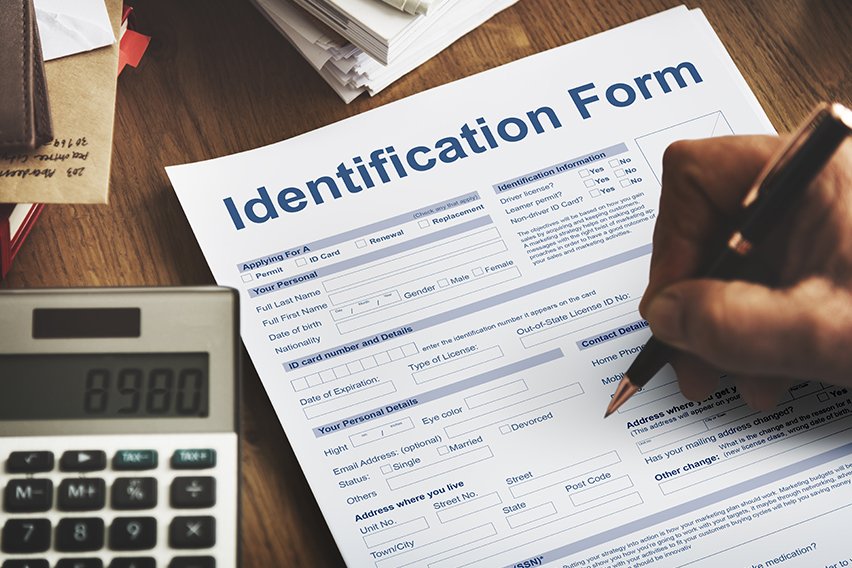How to Become a Small Business Owner in 7 Steps

Ready to start your own business? This step-by-step guide outlines exactly what a budding owner needs to set up a successful small business.
In this article, we will cover the following steps:
- Choose a Business Idea
- Write a Business Plan
- To Incorporate or Not
- Register Your Business
- Get Business Funding
- Improve Cash Flow
- Jump Start Marketing
NOTE: FreshBooks Support team members are not certified income tax or accounting professionals and cannot provide advice in these areas, outside of supporting questions about FreshBooks. If you need income tax advice please contact an accountant in your area.

1. Choose a Business Idea
Have several small business ideas that seem innovative? Pick the idea that resonates with a potential group of clients (a market). Your business needs to meet the needs of a market and address its specific problems (or “pain points”).
Even if you’re building your small business from an existing side hustle, you need to make sure your service uniquely addresses client problems. Otherwise, it can be difficult to add enough clients to support a full-time business.
Here are strategies to identify client needs and pain points:
Market Research
Market research will help entrepreneurs understand what their target clients need. Do a little market research by sitting down with friends of friends who would potentially buy your service. Or take an existing client out for coffee.
Ask the following questions:
- What social media networks do you use?
- What’s the biggest challenge you’re dealing with right now?
- What does success mean to you?
- How do you evaluate a new service provider?
- What is the most stressful aspect of your business?
- Which blogs or publications do you read regularly?
Size Up the Competition
Small business owners needs to make sure their service is different from what’s currently on offer. This is called a competitive advantage. Identify this advantage by sizing up your competition.
Create a document with a list of major potential competitors, identifying the strengths and weaknesses of each. The Small Business Administration’s SizeUp tool makes it easy to research your competitors and compare your business to theirs.
2. Write a Business Plan
Creating a business plan will help you set (realistic) goals and figure out how much cash you’ll need in your first year. It’ll also make you think about the number of clients you need and the type of marketing required to attract those clients.
Here are the steps to writing a business plan:
Research
Entrepreneurs need to be able to explain why their business idea will succeed. Part of this involves identifying how you’ll do things similarly to your competition and how you’ll do them differently, according to Inc.. The different part is key—it’s better to not go up against your major competitors directly but find a niche.
Identify your niche by asking yourself the following questions:
- Can you market your service differently?
- Can you use a different sales strategy?
- Can you position your service differently?
- Can you focus on a specific subset of clients?
Use the Small Business Administration’s SizeUp tool to get a comparison to your competitors. This will help you not only sell your business idea to others, but identify and resolve any weak spots in your business idea from the beginning.
Identify Your Audience
Who are you writing this business plan for? For example, you may be writing the plan to apply for a loan. So you’ll want to lay out all your costs and projected return on investment (ROI). A lender will want practical and level-headed details, like how the loan will be repaid. Don’t promise huge profits as this can signal big risk. And make sure to outline any risks associated with your business.
If you’re writing your business plan for yourself, skip background information and focus on sections that are important to you.
Use a Template
The Small Business Administration has a business plan template that’s free to download. It’s important to have a structure to follow so you hit all the key points (and ensure you look like a pro, not a rookie). It’s also a good idea to Google business plans to see what other companies like yours have done in the past.
3. To Incorporate or Not
Incorporation means making a company a legal corporation. Most small businesses are not incorporated—the Small Business Administration says that 63 percent are classified as sole proprietorships, partnerships or other business structures like limited liability companies (LLCs). Only 37 percent of small businesses are incorporated.
Incorporation isn’t for every small business owner. In fact, less than 30 percent of creatives are incorporated, probably due to a fear of formalities and more paperwork. That said, incorporation can have tax benefits and reduce your personal liability as a small business owner.
For example, if a small business isn’t incorporated and it’s sued or can’t pay its bills, the owner will be personally responsible.
This FreshBooks guide has tips on picking best business structure for you based on your business type and goals.
4. Register Your Business
Whether you need to register your small business depends on your location and structure. The Small Business Administration can guide you through this process. You may need to register both federally and with your state and some business structures need an agent to register. You can also register your business name locally. Registering usually costs less than $300.
A business license may also be required depending on your industry. Use a tool like BusinessLicenses.com to check if you need to license your business in your city or county.
5. Get Business Funding
Ideally, a small business owner should have enough money to cover three to six months of operating expenses before even starting their company. Operating expenses include rent, equipment and insurance.
This cash cushion will help when clients don’t pay invoices on time, there’s less work than usual or investments are needed to grow the company.
You also need to calculate your startup costs. The Small Business Administration has a downloadable worksheet to calculate these costs.
This worksheet will also let you calculate your monthly expenses so you can determine how much savings you need.
Total savings needed plus startup costs is the amount you’ll need in funding.
There are two ways you can fund your business:
Bootstrapping
The bootstrapping method involves being tight with your spending and growing a business without much investment.
You’ll need to rely on your own skills or learn new ones to manage your finances and run your marketing campaigns. FreshBooks has a comprehensive list of tools every entrepreneur needs. Many are free or low cost, helping you run many aspects of your business at minimal cost.
Some types of businesses work better with the bootstrapping model, including creative freelancing (writing or graphic design, for example), tutoring or working as a virtual assistant.
Larger businesses can apply for business incubators and accelerators—Entrepreneur lists the best incubators and Forbes has a list of top 2017 accelerators. These programs help businesses grow by giving guidance. They can also lend capital and offset costs by providing office space and support staff.
Funding
Small businesses that need more funds than bootstrapping can provide need to look at other options. That said, funding can be hard to secure without a track record of success. And each source has its pros and cons.
Funding sources to consider:
- Borrowing money. Small business loans will leave you with complete control over your company. You need a business plan, financial projects for the next five years and an expense sheet to apply for a loan. The Small Business Administration has an online tool to match you with SBA-approved lenders.
- Crowdfunding. This involves raising money from a large group of people. These people don’t get control or ownership over your company in return. Instead, they receive a gift (your product or another perk). It’s also a low risk funding option. Explore your options in this FreshBooks blog post.
- Venture capital. Only for high-growth companies. Instead of providing a loan, venture capitalist provide funding in exchange for a degree of ownership and control over your company.
6. Improve Cash Flow
In the early days of your business, it’s important to bump up cash flow so you can break even more quickly and have more money to invest in growth.
One way to do this in a service-based small business is to draw up contracts with clients. Don’t let them pay after the service is delivered. Ask for a deposit or structure milestones. This strategy can be hugely beneficial to your cash flow, especially with long-term projects.
You can also encourage new customers to work with you by offering a short-term discount or an offer.

7. Jump Start Marketing
Now that you understand your market, it’s time to reach out to those potential clients.
Here are a few marketing tactics to consider:
- Build a website using free tools like Wix or WordPress. Squarespace is a paid option if you want more design help. These tools can incorporate a blog, as well.
- Social media (use Hootsuite to manage your channels)
- Email marketing (try MailChimp or MailerLite, free up to 1000 subscribers)
- Advertising (paid)
- Referral program. This could include a customer loyalty program or partnering with other businesses.
Not all the above tactics are necessary. Maybe you’re not a writer and don’t feel comfortable blogging. Or your audience prefers Facebook over Snapchat. It’s about using the tools that are effective.
Lacking marketing experience? Check out the FreshBooks Small Business Resources Marketing Hub for tips and further tools.
People Also Ask:
What Do I Need to Start a Small Business?
There are four requirements to start a small business. It’s important to understand these legal requirements before you launch your small business to ensure smooth sailing in the future.
- Register your business name. Otherwise, a business’s legal name will be the owner’s name. For example, you could register “Jane Doe Communications.” The Small Business Association (SBA) can help you register federally and with your state.
- Be aware of your tax obligations. Small businesses with employees or that operate as a partnership or corporation need an Employer Identification Number (EIN)—apply here. The SBA has a guide to figuring out your federal and state tax obligations.
- Register for permits or licenses. You may need to apply for a federal and/or state license to operate. This will depend on your industry. BusinessLicenses.com is a tool that will help you determine what permits or licenses you may need.
- Understand business laws.Business laws and regulations can apply to small businesses as well, not just large corporations. The SBA has a guide to what taxes you’ll need to file, what reports to submit and what laws you need to be aware of, such as those concerning advertising and copyright.
RELATED ARTICLES

 How to Choose the Best Accounting Software for Your Small Business?
How to Choose the Best Accounting Software for Your Small Business? Specific Identification Accounting 101
Specific Identification Accounting 101 What Is an Acid Test Ratio?
What Is an Acid Test Ratio? 12 Poor Accounting Practices That Will Damage Your Business
12 Poor Accounting Practices That Will Damage Your Business How to Choose the Right Accounting Software for Your Business?
How to Choose the Right Accounting Software for Your Business? Accounting Changes & Corrections 101
Accounting Changes & Corrections 101